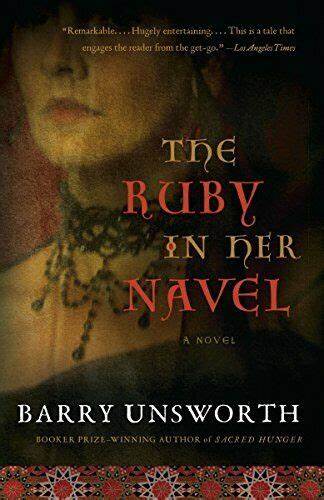
The Ruby In Her Navel PDF
0.6111 MB·other
Most books are stored in the elastic cloud where traffic is expensive. For this reason, we have a limit on daily download.
Preview The Ruby In Her Navel
Description:
If one had the misfortune to be born in the 12th century, then Sicily was the place to be. The Normans had conquered the island, finding it effectively divided in two, inhabited partly by Arabs, partly by Greeks. From the outset, they had given both these communities major responsibility in the government. As well as Latin and Norman French, Greek and Arabic were official languages of the developing state; and when in 1130 that state became a kingdom under Roger II, it was already an example to all Europe of cultural and religious toleration. The chief minister and head of the all-important navy was always a Greek (our word admiral derives through Norman Sicily from the Arab title of emir), while the treasury was entrusted to Arabs, whose mathematics were better than anyone else's. Roger himself was as unlike a Norman knight as it is possible to be. Brought up in Palermo by an Italian mother in a world of Greek and Muslim tutors, he was a southerner – indeed, an oriental – through and through; and the chapel that he built in the Royal Palace is one of the wonders of the world. The ground plan is that of a western basilica; but the walls are encrusted with Byzantine mosaics as fine as any in existence, while the wooden roof, in the classical Islamic style, would do credit to Cairo or Damascus. Here as nowhere else the Norman achievement is given visual expression. But of course it was all too good to last. The independent Norman kingdom of Sicily endured only 64 years, ending soon after the death of the last legitimate king, William the Good. But perhaps that kingdom, swallowed up by the Holy Roman Empire, carried within itself the seeds of its own destruction. It was too heterogeneous, too eclectic, too cosmopolitan. It hardly tried – or perhaps it had no time – to develop any natural traditions of its own. And it paid the price. Here, then, is the tragedy that forms the backdrop to the Booker-longlisted The Ruby in her Navel. Nowadays the story of Norman Sicily is largely and undeservedly forgotten; knowing it and loving it as I do, I picked the book up with some trepidation (which, I may say, was hardly diminished by its appalling title). But I have long admired its author, so I plunged in – and was instantly, and almost literally, transported. Now, it is not easy to transport a reader 1,000 years into the past, into a country and cultural climate 1,000 miles away from his own; I can only say that Unsworth succeeded triumphantly. His hero, born in England of a Norman father but brought to Sicily as a child, tells his story in the first person. It begins with him working as a civil servant in the office of a high-ranking Arab; he is sent on a mission to Calabria, where he meets a troupe of travelling dancers from eastern Anatolia (one of them the owner of the eponymous navel) and where he is accidentally reunited with a childhood sweetheart, now unhappily married. There follows a somewhat picaresque story of love, betrayals and attempted regicide, all of it set against the constant rivalries of Latin and Greek, Christian and Muslim – the latter further exacerbated by the recent catastrophic second crusade. It is a good story, which holds the attention from start to finish; but its real strength lies in the power of the author's historical imagination. He made me feel what it was actually like to live, work and travel in Norman Sicily. There is no whitewashing; almost all the characters, including the narrator himself, are to a greater or lesser degree unpleasant. But life, one feels, was never dull, if one had the misfortune to be born in the 12th century.
See more
The list of books you might like
Most books are stored in the elastic cloud where traffic is expensive. For this reason, we have a limit on daily download.
